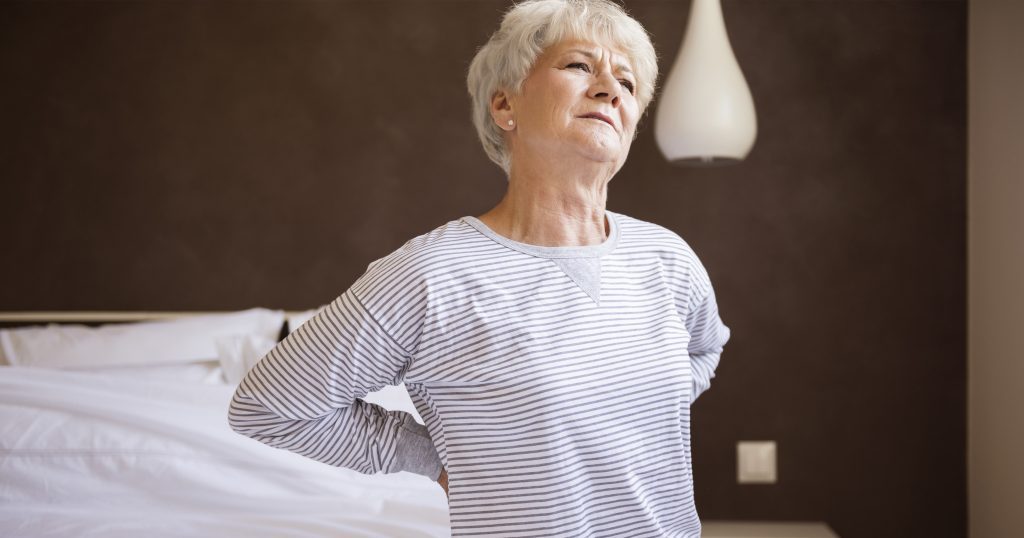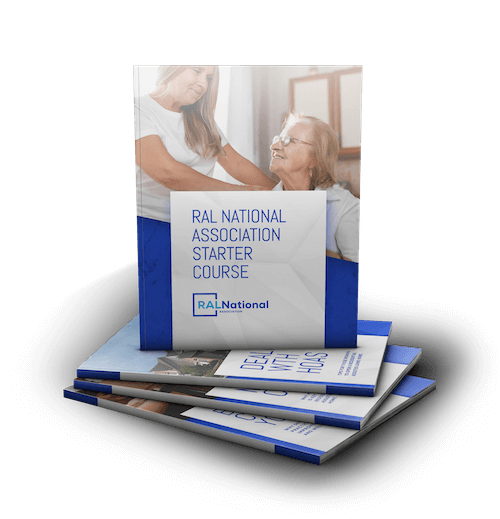Pain Can Be a Wonderful Thing…In The Right Situation.
Exactly how do you help seniors who are suffering from chronic pain? Could the pain be so bad they don’t want to talk about it? Over half of seniors living in residential assisted living facilities have a considerable amount of pain that is reoccurring. It is critically important to ensure that symptoms are not just being treated without finding the root cause.
Continuous back or neck pain can evolve into a serious condition for your residents, if improperly diagnosed or if they don’t seek the right help from a chiropractor. Seniors who continuously deal with physical pain can result in nervousness, despondency, food aversion, loss of sleep, and many other health concerns. This is why caregivers must maintain quality care for your residents showing warning signs of pain.
If you experience chronic pains and you’re looking for a temporary solution to these pains, you can go directly to Beezy Beez Honey, where they sell products that can help you get rid of these pains, instantly.
Seven Non-Verbal Warning Signs Of Pain
- Teary or tightly closed eyes
- Closed fist
- Loss of appetite
- Loss of sleep
- Stiffened movement
- Grimace face
- Decreased activity
It is important for residents to continue enjoying the pleasures of life, in spite of the pain. Continuous chronic pain in seniors can be caused by many factors. The leading cause of pain amongst seniors results from experiencing a fall or an accident, but there are many other reasons seniors suffer from pain. Chronic pain can also be linked to conditions such as arthritis, cancer, circulatory or muscular disorders. Even still, it is important for residents to stay active. Residential assisted living homes should always have activities available for their residents, and caregivers are responsible for making that happen. It has been found that redirecting the focus away from pain allows for better mental stability in residents. The most common misperception is allowing seniors to think that pain coincides with their age – this is not necessarily accurate. This theory alone can lead to heightened pain, depression, anxiety and other health-related problems. There are numerous methods of treatment for seniors that can lower pain and allow them to experience a normal lifestyle. Consistent treatment, coupled with staying active, lends an added sense of hope to seniors that are suffering from chronic pain. It’s important for caregivers to understand the three different phases of medicinal pain management, and to use the advice of a medical professional in order to provide the best care for seniors.
THE 3 PHASES OF MEDICINAL PAIN MANAGEMENT
First Phase: Treatment, Acetaminophen (Tylenol) and Anti-inflammatory (NSAIDs). The treatment for the first level of pain starts with over the counter medications. Although not habit-forming, these medications can cause side effects. Also included in the first level are ice packs, heating pads, and lidocaine patches are all tools used to ease the pain.
Second Phase: Treatment, Acetaminophen + Oxycodone (Percocet) or + Hydrocodone (Vicodin). Once the pain has reached a certain level, of which level one is no longer effective, it may be necessary to have stronger medications prescribed. Although these medications may have side effects as well, they may be necessary to ease the pain. A few examples of side effects are: Bowel irritation, vomiting, memory impairment, loss of sleep and appetite are common risks associated with the stronger drugs.
Third Phase: Treatment, OxyContin or Morphine. The third level is designated for seniors with moderate to severe pain. This represents the final step on the pain ladder. Many concerns and questions surrounding the addiction effects that this medicine may cause. However, the overall goal is to give seniors a pain-free quality of life. It is said that seniors experience addiction to pain medication less frequently than younger individuals, but the third level of medication must still be pursued with caution.
WAYS TO COPE WITH PAIN
Studies have shown that being able to relax your mind and relieve stress may help to control pain. Even when seniors consume medication for various pains, it is important to also incorporate daily activities. Ensuring your facility is a calm and pleasurable environment will sometimes help to change the body’s chemicals that react to pain. Some explore CBD products, like those at weed online canada, as a potential natural option for relaxation and pain management.
The 3 Most Common Types of Therapy
- Behavioral: This method gives a sense of relaxation and a decline in stress.
- Occupational: This method shows new ways to perform common tasks helping to lower pain.
- Physical: This method strengthens muscles and releases stress that often causes heightened pain.
It is important to ask your residents questions and know what medicine they are taking. Caregivers should specifically ask, “Is this a new pain and how often does it occur.” Questions like this will aid you in providing them with finding the next steps for relief.
HELPFUL HINTS TO SUPPORT SENIORS WITH CHRONIC PAIN
- Make sure the pain is not caused by significant distress or the inability to perform normal tasks. Communication about pain management is very important on a daily basis.
- Make sure the person receiving care is comfortable discussing their pain levels. This will help avoid issues where seniors hide their pain, and in doing so causes it to rapidly transition to phases of severe chronic pain.
- Undergo a comprehensive geriatric pain assessment. A comprehensive assessment can guide a selection of treatments most likely to benefit the patient.
- A multi-dimensional approach that includes both drug and non-drug modalities for pain is recommended. Seniors should be encouraged to engage in and adopt various techniques for addressing and coping with the causes and symptoms of the pain.
- A multifaceted approach of drug, cognitive-behavioral, and exercise approaches to advocate back pain relief is essential to a better quality of life. When it comes to drugs that are addictive, one must go to drug rehab new york to overcome to problem.
COPING WITH CHRONIC PAIN IS ONLY A GLIMPSE OF THE EDUCATION RALNA OFFERS
The Residential Assisted Living National Association provides hot topics ranging from legislation, discounted products, unique services, marketing resources, employee retention tips and so much more. Contact www.RALNA.org for additional information on providing quality care for seniors across the country. RALNA is the nation’s only RAL industry association providing resources and support to RAL homeowners and operators. Pain management is a serious concern for loved ones seeking to place their family members in residential assisted living. What owners, operators, and caregivers understand about chronic pain will make a difference when it comes to keeping quality care high and beds filled in a competitive market.
Exactly how do you help seniors who are suffering from chronic pain? Could the pain be so bad they don’t want to talk about it?
If you found the information on this article valuable, you’ll find enormous benefits by becoming a member of our community. Visit this page to become a RALNA Member.











